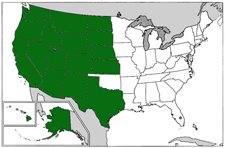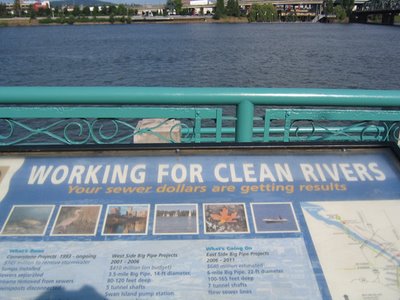Here's a happy Summer Day to you - PDX style!





"Do not dwell in the past, do not dream of the future, concentrate the mind on the present moment."
-- Buddha
 The 32nd edition of Carnival of the Green is up at Savvy Vegetarian...
The 32nd edition of Carnival of the Green is up at Savvy Vegetarian...
The dumping and burning has embarrassed ministry officials and exposed major gaps in the American-designed reconstruction program, even as President Bush appeals to the international community for much more rebuilding money in the wake of his visit to Baghdad.
The NWHI coral reefs are the foundation of an ecosystem that hosts more than 7,000 species, including marine mammals, fishes, sea turtles, birds, and invertebrates. Many are rare, threatened, or endangered. At least one quarter are endemic, found nowhere else on Earth. Many more remain unidentified or even unknown to science. Unexplored deep-sea habitats, expensive and challenging to survey, may provide new species records to science for decades. Even the shallow coral reef habitats hold new species to science. This is especially true for invertebrates and algae.
Besides supporting these species, the coral reefs and bits of land of the NWHI provide an amazing geological record of the volcanic powers that created the area and the erosion and subsidence that sculpted it.
Permits will be required for activities related to research, education, conservation and management, native Hawaiian practices and non-extractive special ocean uses. The commercial and recreational harvest of precious coral, crustaceans and coral reef species will be prohibited in monument waters and commercial fishing in monument waters will be phased out over a five-year period. Oil, gas and mineral exploration and extraction will not be allowed anywhere in the monument.
Many potential stressors are associated with mining activities. The physical and chemical stressors associated with mining are reflected by the composition of biological assemblages and the energy and material flows of the ecosystem ((e.g., Clements et al. [1992]; Starnes [1985]; Hill et al. [1997]). The principal response to physical habitat degradation is loss of biological diversity (fish, macroinvertebrates, algae) at both local (stream) and landscape (watershed) scales. Accelerated morbidity and mortality can also occur. Overall ecosystem function degrades.

A Transmission Task Force examined this cross cutting issue and concluded that while transmission is always a large consideration with respect to the location of new generating facilities, transmission in and of itself should not be a barrier to achieving the 30,000 MW goal.

 Carnival of the Green's 31st edition is up at one of Science Blog's newest members: Blog Around the Clock.
Carnival of the Green's 31st edition is up at one of Science Blog's newest members: Blog Around the Clock.
The question of course remains, as to whether we are getting any better at all at listening to what our tools tell us. Because unless we're willing to use the insight we're gaining to try to think like a salmon stream, say, and act to meet its needs, the danger always remains of what Thoreau called "improved means to an unimproved end." That is, the danger exists that we will simply more finely and accurately document the decline of what love and depend on.
Triana will view the Earth in a different way - as an entire planet rather than a patchwork of regions of interest. It will uniquely acquire synoptic (all regions in the sunlit side seen simultaneously) sunrise to sunset, high time resolution data for most points on Earth using state of the art, highly accurate, in flight calibrated instruments.
Triana will collect information on the climate system combining atmospheric dynamics, cloud physics, aerosols, radiation and surface remote sensing.


Crap. I went to bed last night full of hope. 06-06-06. I sprung outta' bed this morning, rushed to my laptop, and found out God didn't come for them afterall. Shit. So much for the meek inheriting the earth. Kinda' like the anti-Christmas.
As well as hiding objects, an invisibility cloak could have other uses, such as clearing away obstructions and eyesores.Factory buildings or warehouses could be encased in invisibility material to prevent them blocking views of the unspoiled countryside.